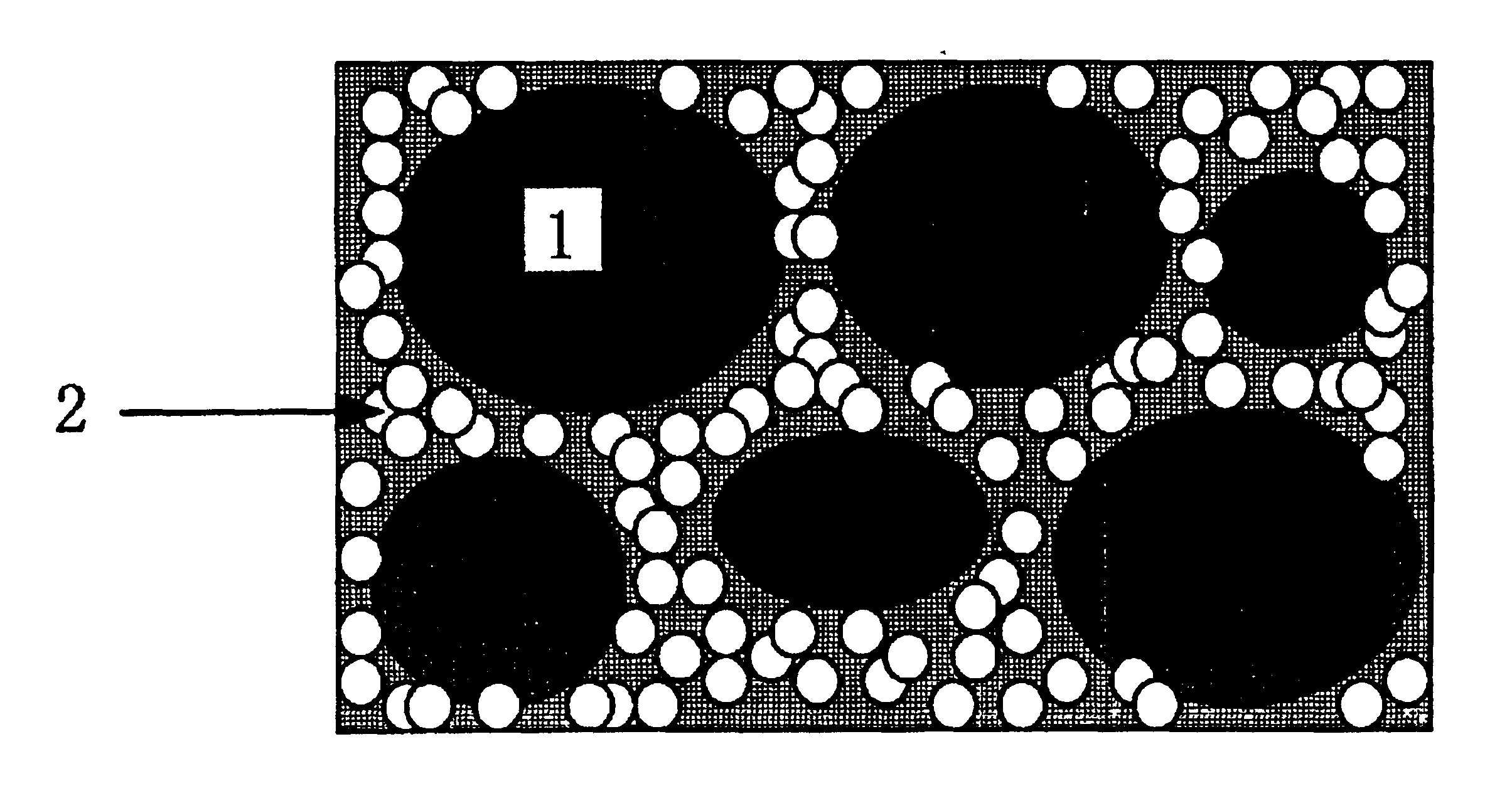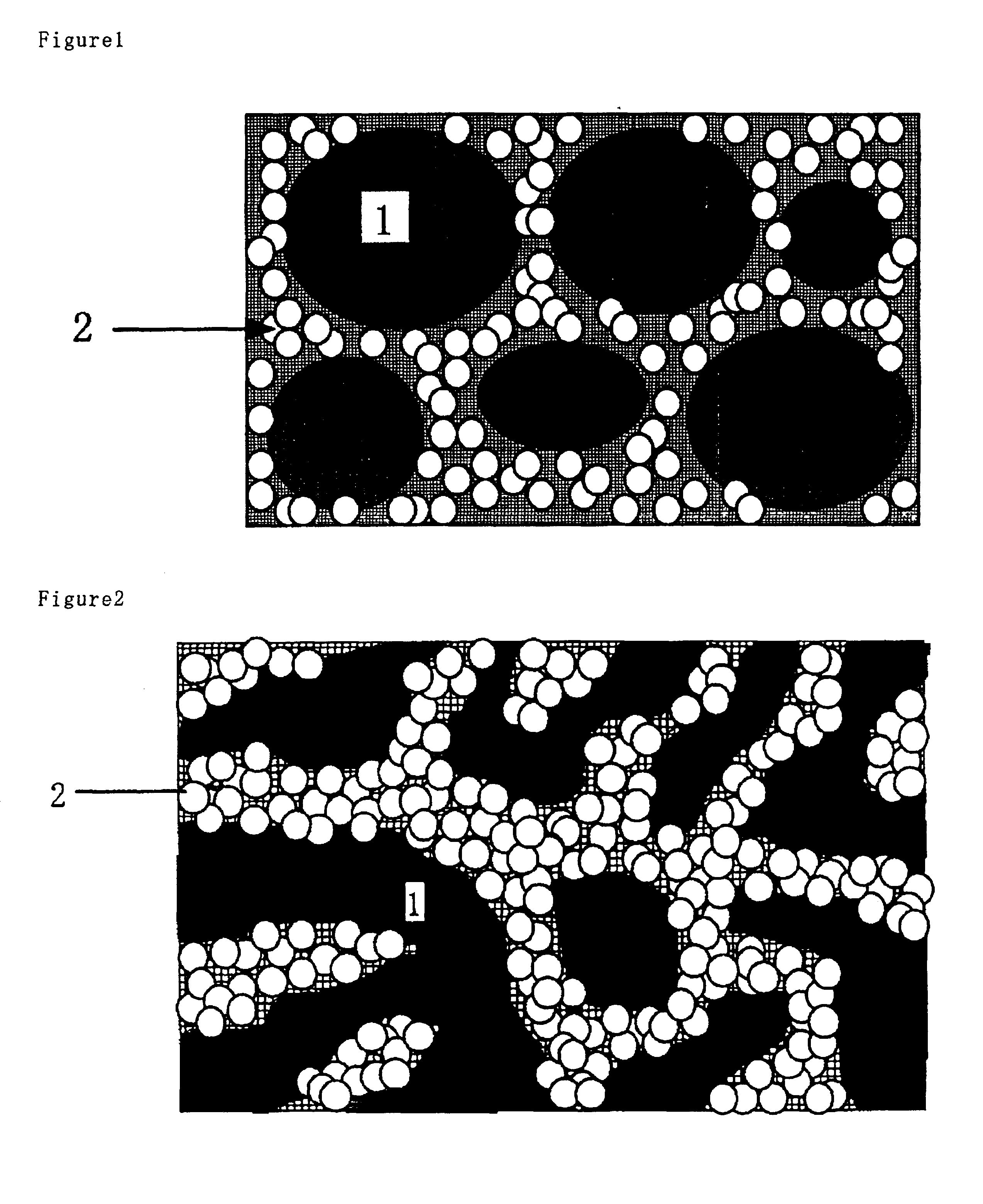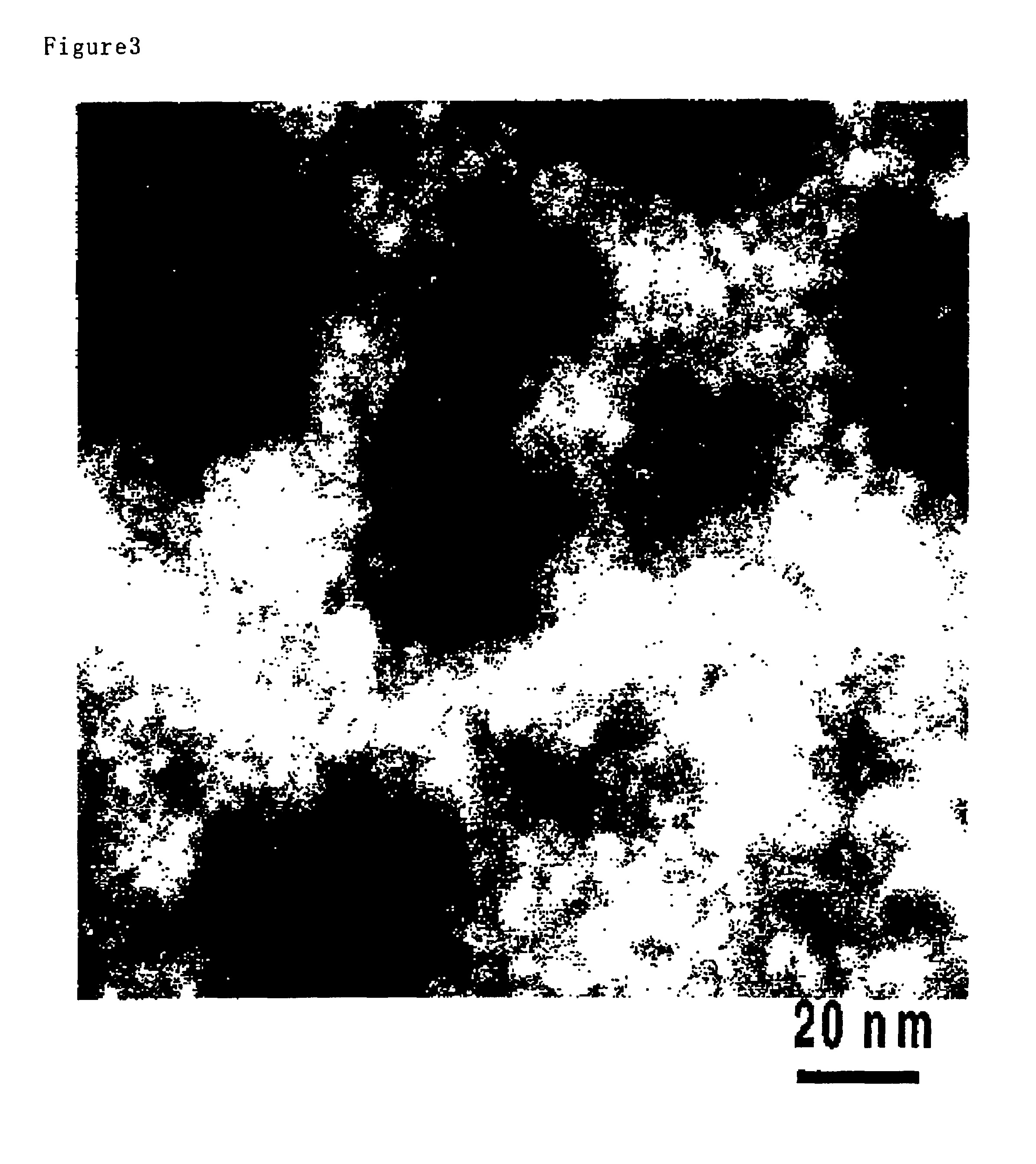Proton-conducting membrane, method for producing the same, and fuel cell using the same
- Summary
- Abstract
- Description
- Claims
- Application Information
AI Technical Summary
Benefits of technology
Problems solved by technology
Method used
Image
Examples
example 1
A solution of 0.8 g of 1,8-bis(triethoxysilyl)octane (Gelest Inc.) dissolved in 1.5 g of isopropyl alcohol was prepared. Another solution of 0.7 g of tungstophosphoric acid of n-th hydrate (Wako Pure Chemical Industries) dissolved in 1.5 g of isopropyl alcohol was separately prepared. These solutions were mixed with each other, stirred for several minutes, and poured into a Petri dish of polystyrene (Yamamoto Seisakusho, inner diameter: 8.4 cm), where the mixture was left at room temperature (20° C.) for 15 hours and heated at 60° C. for 10 hours in a saturated steam atmosphere, to prepare the transparent membrane. It was washed in a flow of water at 60° C., before it was analyzed. The evaluation results are given in Table 1.
The membrane thus prepared was analyzed by a field emission type electron microscope (e.g., JOEL's JEM-2010F) to produce the Z-contrast microgram, which is given in FIG. 3.
In FIG. 3, the white portion represents the portion derived from tungsten or the like havi...
example 2
The membrane was prepared in the same manner as in EXAMPLE 1, except that 1,8-bis(triethoxysilyl)octane was replaced by 0.8 g of 1,6-bis(trimethoxysilyl)hexane (Gelest Inc.) and 0.8 g of tungstophosphoric acid was used. The evaluation results are given in Table 1.
example 3
(Synthesis of (1,14-bis(triethoxysilyl)tetradecane)
This compound was synthesized in accordance with the method described in detail by, e.g., W. Oviatt et. al. (Chem. Mater., 1993, 5, 943).
A mixture of 25 g of 1,13-tetradecadiene (Aldrich), 44.4 g of triethoxysilane (Shin-Etsu Silicone) and 0.1 mL of 3% xylene solution of a platinum complex of bis((vinyl dimethyl)disiloxane) was stirred at room temperature in a nitrogen atmosphere for 3 days. The resultant reaction mixture was purified by distillation, to obtain 1,14-bis(triethoxysilyl)tetradecane. Its structure was confirmed by NMR.
(Formation of Membrane)
The membrane was prepared in the same manner as in EXAMPLE 1, except that 1,8-bis(triethoxysilyl)octane was replaced by 0.9 g of 1,14-bis(triethoxysilyl)tetradecane and 0.6 g of tungstophosphoric acid was used. The evaluation results are given in Table 1.
PUM
| Property | Measurement | Unit |
|---|---|---|
| Temperature | aaaaa | aaaaa |
| Temperature | aaaaa | aaaaa |
| Percent by mass | aaaaa | aaaaa |
Abstract
Description
Claims
Application Information
 Login to View More
Login to View More - R&D
- Intellectual Property
- Life Sciences
- Materials
- Tech Scout
- Unparalleled Data Quality
- Higher Quality Content
- 60% Fewer Hallucinations
Browse by: Latest US Patents, China's latest patents, Technical Efficacy Thesaurus, Application Domain, Technology Topic, Popular Technical Reports.
© 2025 PatSnap. All rights reserved.Legal|Privacy policy|Modern Slavery Act Transparency Statement|Sitemap|About US| Contact US: help@patsnap.com



